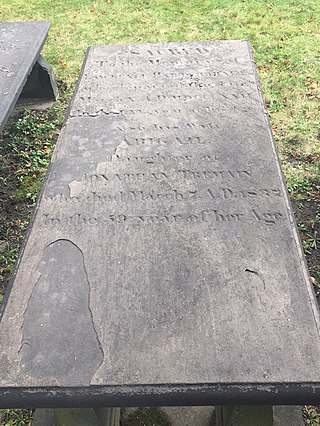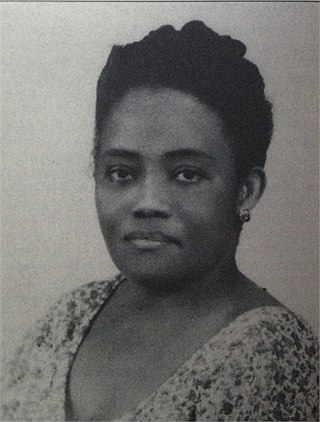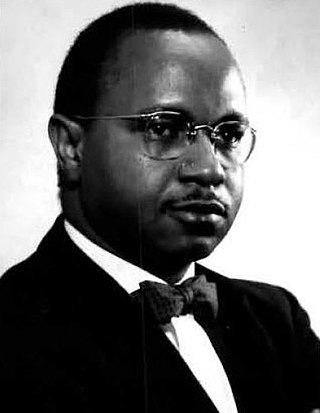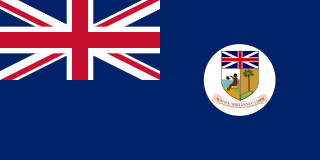
Sierra Leone's music is a mixture of native, French, British, West Indian and Creole musical genres.

Sherbro Island is in the Atlantic Ocean, and is included within Bonthe District, Southern Province, Sierra Leone. The island is separated from the African mainland by the Sherbro River in the north and Sherbro Strait in the east. It is 32 miles (51 km) long and up to 15 miles (24 km) wide, covering an area of approximately 230 square miles (600 km2). The western extremity is Cape St. Ann. Bonthe, on the eastern end, is the chief port and commercial centre.

The Sierra Leonean Creole or Krio is an English-based creole language that is lingua franca and de facto national language spoken throughout the West African nation of Sierra Leone. Krio is spoken by 96 percent of the country's population, and it unites the different ethnic groups in the country, especially in their trade and social interaction with each other. Krio is the primary language of communication among Sierra Leoneans at home and abroad, and has also heavily influenced Sierra Leonean English. The language is native to the Sierra Leone Creole people, or Krios, a community of about 104,311 descendants of freed slaves from the West Indies, Canada, United States and the British Empire, and is spoken as a second language by millions of other Sierra Leoneans belonging to the country's indigenous tribes. Krio, along with English, is the official language of Sierra Leone.
Gumbe, also goombay or gumbay, is a West African style of music found in countries such as Sierra Leone and Guinea-Bissau. Sierra Leonean gumbe music is indigenous to the Sierra Leone Creole people and was derived from the Jamaican Maroon ancestors of the Creole people. Creole musicians such as Ebenezer Calendar and Dr Oloh popularized gumbe music in Sierra Leone and in other West African locales.
An English-based creole language is a creole language for which English was the lexifier, meaning that at the time of its formation the vocabulary of English served as the basis for the majority of the creole's lexicon. Most English creoles were formed in British colonies, following the great expansion of British naval military power and trade in the 17th, 18th and 19th centuries. The main categories of English-based creoles are Atlantic and Pacific.
Jamaican Maroons descend from Africans who freed themselves from slavery on the Colony of Jamaica and established communities of free black people in the island's mountainous interior, primarily in the eastern parishes. Africans who were enslaved during Spanish rule over Jamaica (1493–1655) may have been the first to develop such refugee communities.
Jamaican Maroon language, Maroon Spirit language, Kromanti, Jamaican Maroon Creole or Deep patwa is a ritual language and formerly mother tongue of Jamaican Maroons. It is an English-based creole with a strong Akan component, specifically from the Fante dialect of the Central Region of Ghana. It is distinct from usual Jamaican Creole, being similar to the creoles of Sierra Leone (Krio) and Suriname such as Sranan and Ndyuka. It is also more purely Akan than regular Patois, with little to no contribution from other African languages. Today, the Maroon Spirit language is used by Jamaican Maroons. Another distinct ritual language consisting mostly of words and phrases from Akan languages, is also used by Jamaican Maroons in certain rituals including some involving possession by ancestral spirits during Kromanti ceremonies or when addressing those who are possessed and sometimes used as a kind of code.
Maroon Town, Sierra Leone, is a district in the settlement of Freetown, a colony founded in West Africa by Great Britain.

Cline Town is an area in Freetown, Sierra Leone. The area is named for Emmanuel Kline, a Hausa Liberated African who bought substantial property in the area. The neighborhood is in the vicinity of Granville Town, a settlement established in 1787 and re-established in 1789 prior to the founding of the Freetown settlement on 11 March 1792.
The Jamaican Maroons in Sierra Leone were a group of just under 600 Jamaican Maroons from Cudjoe's Town, the largest of the five Jamaican maroon towns who were deported by the British authorities in Jamaica following the Second Maroon War in 1796, first to Nova Scotia. Four years later in 1800, they were transported to Sierra Leone.

The Nova Scotian Settlers, or Sierra Leone Settlers, were African Americans who founded the settlement of Freetown, Sierra Leone and the Colony of Sierra Leone, on March 11, 1792. The majority of these black American immigrants were among 3,000 African Americans, mostly former slaves, who had sought freedom and refuge with the British during the American Revolutionary War, leaving rebel masters. They became known as the Black Loyalists. The Nova Scotian settlers were jointly led by African American Thomas Peters, a former soldier, and English abolitionist John Clarkson. For most of the 19th century, the Settlers resided in Settler Town and remained a distinct ethnic group within the Freetown territory, tending to marry among themselves and with Europeans in the colony.
The history of African-American settlement in Africa extends to the beginnings of ex-slave repatriation to Africa from European colonies in the Americas.

Edna Elliott-Horton was the second West African woman from a British colony to receive a university degree after the Nigerian physician Agnes Yewande Savage, who received a medical degree from the University of Edinburgh in 1929. A Sierra Leonean, Elliott-Horton became the first West African woman to complete a BA degree in the liberal arts, after graduating from Howard University in 1932, where Dr. Edward Mayfield Boyle, her maternal uncle, had graduated as a medical doctor. Elliott-Horton was a political activist who challenged the colonial authorities in Sierra Leone through her participation in the West African Youth League which was formally established in her living-room.

The Sierra Leone Creole people are an ethnic group of Sierra Leone. The Sierra Leone Creole people are descendants of freed African-American, Afro-Caribbean, and Liberated African slaves who settled in the Western Area of Sierra Leone between 1787 and about 1885. The colony was established by the British, supported by abolitionists, under the Sierra Leone Company as a place for freedmen. The settlers called their new settlement Freetown. Today, the Sierra Leone Creoles are 1.2 percent of the population of Sierra Leone.

Arthur Thomas Daniel Porter III was a Creole professor, historian, and author. His book on the Sierra Leone Creole people, Creoledom: A study of the development of Freetown society, examines their society in a way in which few books of their time period had, and it is one of the most quoted books on the Creoles. He was published in East Africa and the UK.

The Colony and Protectorate of Sierra Leone was the British colonial administration in Sierra Leone from 1808 to 1961, part of the British Empire from the abolitionism era until the decolonisation era. The Crown colony, which included the area surrounding Freetown, was established in 1808. The protectorate was established in 1896 and included the interior of what is today known as Sierra Leone.
The traditional Jamaican Maroon religion, otherwise known as Kumfu, was developed by a mixing of West and Central African religious practices in Maroon communities. While the traditional religion of the Maroons was absorbed by Christianity due to conversions in Maroon communities, many old practices continued on. Some have speculated that Jamaican Maroon religion helped the development of Kumina and Convince. The religious Kromanti dance is still practiced today but not always with the full religious connotation as in the past.
Kenneth M. Bilby is an American anthropologist, ethnomusicologist, and author. His published works include the books Words of Our Mouth, Meditations of Our Heart: Pioneering Musicians of Ska, Rocksteady, Reggae, and Dancehall (2016), Enacting Power: The Criminalization of Obeah in the Anglophone Caribbean, 1760–2011, True-Born Maroons (2005), and Caribbean currents: Caribbean music from rumba to reggae.
Ebenezer Calendar (1912–1985), or Ebenezer Calender, was a Sierra Leone Creole palm-wine musician who popularized Creole gumbe and palm-wine music in Sierra Leone and West Africa. Calendar heavily influenced Dr Oloh and other Sierra Leonean musicians. Ebenezer Calendar formed the music group, Ebenezer Calendar & His Maringa Band which was popular between the early to middle twentieth centuries.








